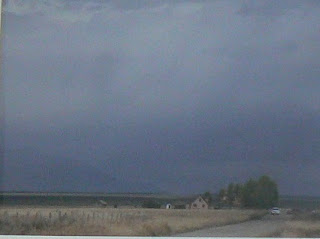28 Jun – 10
Jul
Private View: Saturday 2nd July 2.00 - 6.00pm
In September 2015, friends and artists Quentin Ball, Jean Davey Winter, Mary Pritchard and Tony Wallis went on a journey. Starting in Salt Lake City, Utah, they looped back through
Idaho, Montana and Wyoming. The trip took them close to the Canadian border,
through the northern parts of the Rocky Mountains and to several US national
parks including Yellowstone and Glacier.
What each of them took creatively from their trip is now presented
collectively at the Hastings Art Forum as: 'Four States, Four Minds: An
American Journey'.
The exhibition of
photography, mixed media and ceramic shows landscape as geology, chemistry, beauty, infinity and power. It also reveals a stillness and a perspective
that tends to evaporate in the daily chaos of being human.
The work of the
four artists is arranged across the two spaces at the Hastings Art Forum.
This enables both a balance of mediums and an appreciation of the different
aspects of their responses to the journey.
Mary Pritchard’s photography, for example, takes two very distinct
forms. In the first gallery images are arranged in loosely sequential, multiple
panels that convey movement through a landscape at speed. By contrast, her
photographs in the second gallery space are largely monochromatic studies in
which almost nothing moves at all. These hushed intersections of woods, water
and cloud radiate the quietness and coolness of an autumn dusk.
Formation is very evident in Jean Davey Winter’s work at the other end of the gallery. Her fantastic series of nine small paintings really do look as if they might have been cooling for a few million years. The textures and colours invoke the raw ingredients of mountainous terrain – granites, limestones, sandstones and melded heavy metals.
Such textural
depth and tonal earthiness is complemented perfectly by her series of photographs in the other gallery space. These pieces also suggest extreme
chemical processes at work but they emerge from the geo-thermal riot of colour
that is Yellowstone National Park. Once
more arranging the primary piece in a block of nine, Jean Davey Winter has
taken a constantly turbulent and often toxic process and frozen it into a moment of
still and surreal beauty.
Stillness and
beauty, and the literal and metaphorical journeys undertaken to find it, are a
significant presence in this exhibition. The physical realities of the journey
and how that journey is facilitated, however, is most encapsulated in the work
of Quentin Ball, particularly in the ‘Across Roads’ project.
The Rocky
Mountains cut through Montana, Wyoming, New Mexico and Colorado forming a 3000
mile watershed which splits rainfall to the Pacific on the west, and to the
Gulf of Mexico and Hudson Bay on the east. Whenever westward migration occurred in the US, the ‘Great Divide’ had to be
crossed. Its significance in American
history and culture is therefore huge.
The ‘Across Roads’ project is Quentin Ball’s response to this. He photographed locations where highways intersect the invisible ‘Great Divide’ thus capturing physical facts that cannot possibly convey the enormity of what they represent. What is displayed here is a panorama of the fourteen intersections that lead across the ‘Great Divide’ just from the state of Montana. Implicit in this project is an acknowledgment of those who have beaten paths through impossible odds. Although no person is visible in these photographs, they are present in the evidence of journeys made, signs erected and routes laid.
The ‘Across Roads’ project is Quentin Ball’s response to this. He photographed locations where highways intersect the invisible ‘Great Divide’ thus capturing physical facts that cannot possibly convey the enormity of what they represent. What is displayed here is a panorama of the fourteen intersections that lead across the ‘Great Divide’ just from the state of Montana. Implicit in this project is an acknowledgment of those who have beaten paths through impossible odds. Although no person is visible in these photographs, they are present in the evidence of journeys made, signs erected and routes laid.
The photographs
of Tony Wallis cover a wide range of compositional style and subject including landscape, its abstracted features, expansive skies, singular buildings and one perfect soliloquy of reflective
balance. However, it is only in his photographs that any real human presence is found .
His people
inhabit their landscapes gently and naturally – both incidental and
integral at the same time. There’s a
woman sitting by the lake. There’s a car in the distance. Someone built a house
that looks like it just grew out of the earth but nobody seems to be home. The
church in the middle of nowhere might be abandoned. A homestead is a speck in the
fantastical dominance of the dramatic sky around it. You can’t always see
the people in these photographs but you know that they are there.
I love this show.
I love the images of landscapes so vast that they become abstractions, alongside
images of the same landscapes so detailed that they become equal abstractions.
The delicate presence of humanity is a reminder that we all exist somewhere in
the messy middle of these two polar abstractions and need each other to make paths. It is also a reminder of the catharsis that can come from just being present
in something so huge, timeless and resilient.
In Memoriam
Two months ago
Tony Wallis died of cancer. At the time of the trip nobody could have known. 'Four States, Four Minds' is therefore a very special, if sad memorial to Tony and to his work.





No comments:
Post a Comment